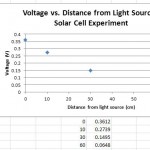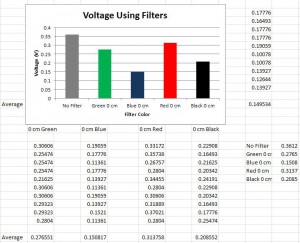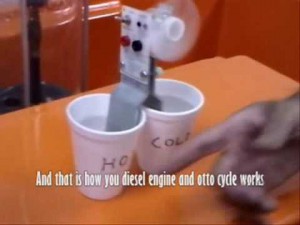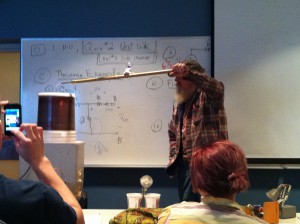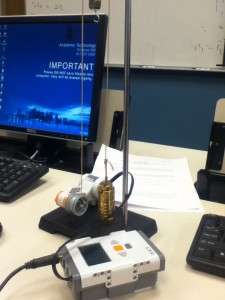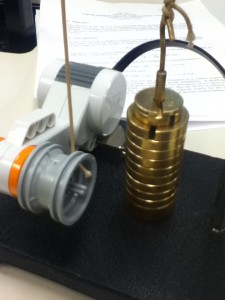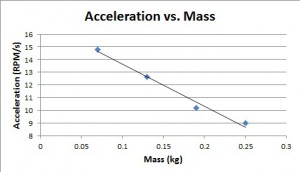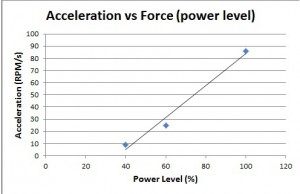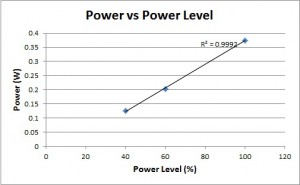For our final science experiment, my group and I decided to do a solar energy experiment. We chose this topic because the idea of solar energy fascinated all of us. We conducted an experiment using a solar panel, capacitors, and resistors to test which capacitor had the slowest energy leak. The reason we wanted to test this topic can be seen in our lab handout which is copied below, our powerpoint presentation can be viewed at:
.
Solar Energy Experiment
Rebecca Bernardo, Lo-Ammi DoNascimento, Victoria Azar
Phil Garceau, Isabelle Atkinson, Matthew Byrne
Purpose of Experiment: To produce energy using a solar panel, and observe how much energy is lost between the three different sized capacitors. (45 microfarad, 4 microfarad, and one microfarad)
Background: One of the biggest problems we face with renewable energy is that it is not constant. Meaning, that the wind is not always blowing or there is no way to produce solar energy during the night. Because of that, we need to find efficient ways to store this energy for when it is needed.
A capacitor is a device that is used to store electricity. But because of the resistive nature of capacitors, they are not the most efficient devices and leak some of the energy that was generated.
In this lab, you will use a solar panel to generate electricity from a handheld flashlight and measure the voltage using NXT to understand how capacitors lose energy.
By analyzing the relationship between capacitors and collecting solar energy, our goal is to understand through this experiment how to store solar energy in the most efficient way, and how to keep its leak at a minimum in order to sustain our planet.
Procedure:
Setup: You will need a solar panel, flashlight, circuit board, three different sized capacitors (45 μF, four μF and one μF), wires, and an NXT with two probes. From there, you will create a circuit across a capacitor via a circuit board. You will then attach probes before and after the capacitor and measure the voltage using NXT.
Data Collection: Run NXT while shining the light on the solar panel to ensure the circuit is properly set up. Immediately after NXT is done recording, turn the solar panel over and press run again. Record your results and repeat twice more with the other two capacitors.
Data:
Voltage in circuit as time elapses
|
1 sec |
2 sec |
3 sec |
4 sec |
5 sec |
6 sec |
7 sec |
8 sec |
9 sec |
10 sec |
|
|
45 μF (V) |
||||||||||
|
4 μF (V) |
||||||||||
|
1 μF (V) |
Analysis:
1. What is the most efficient sized capacitor?
2. Do you think that renewable energy can sustain a community’s energy needs if it lacks the technology to efficiently store energy? Why or why not?
3. What renewable source of energy do you think is less dependable for a constant source of energy, wind or solar? Why?
4. After conducting this experiment, would you consider converting to solar powered energy? Why or why not?
Our experiment showed that the largest capacitor, 45, had the slowest leak and when we traded our experiment to the other group, they also got this result, showing the consistency in our findings. The experiment that we got to try from another group dealt with wind energy, which was fascinating to work with since we had been focusing on solar energy and this allowed us to see another aspect of it. For their experiment we tested a wind turbine they built in different wind conditions (different distances, wind strength, etc) and we judged which was the most powerful by recording the joules. In our conducting of their experiment we found that the most effective wind power came when the turbine was as close to the wind source as possible and it was on high intensity, that elicited the largest joules. Overall, we all really enjoyed this project and we enjoyed conducting and sharing our own experiment. Sustainability was such a big part of this class because it is such an important and vital issue in our world, and making sure we continue to have a world, so it was very educational and fun to be able to do experiments dealing so specifically with sustainability.





